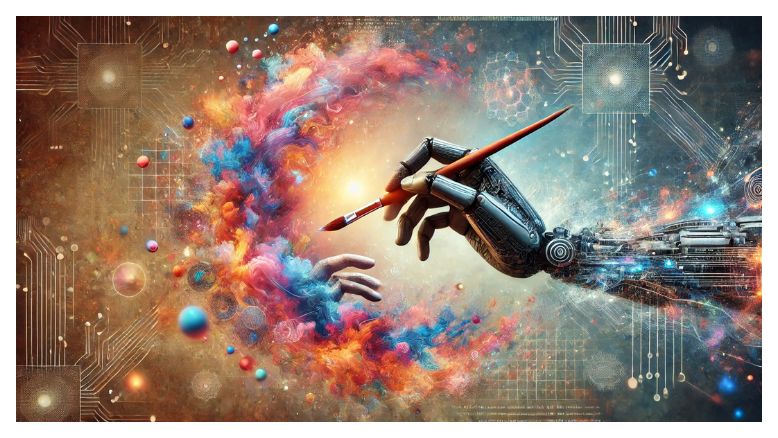
THE EMOTION-CREATIVITY LOOP
Discover how the emotion-creativity loop fuels expression, healing, and deeper emotional awareness in a fast-paced world. Read More …

Discover how the emotion-creativity loop fuels expression, healing, and deeper emotional awareness in a fast-paced world. Read More …

Our journey through the Scottish Highlands was a tapestry of misty lochs, towering glens, Highland cows, and quaint village charms. From the serene shores of Loch Lomond to the mystery of Loch Ness and the lively streets of Pitlochry — this was a heartfelt recollection of a day well spent with family. Read More …

The Matrix films go beyond sci-fi, exploring reality, control, and enlightenment. Unravel their deeper meanings through Eastern Philosophies. Read More …

AI Art is revolutionising creativity, blurring the lines between human imagination and machine intelligence. With algorithms generating stunning visuals, from paintings to digital masterpieces, the debate intensifies—can AI truly be creative, or is it just mimicking patterns? As technology and art converge, AI Art challenges traditional notions of authorship, originality, and artistic intent, reshaping the future of visual expression. Read More …

Genderless fashion is more than a trend—it’s a movement reshaping the fashion industry. This blog explores how unisex clothing promotes sustainability, challenges traditional fashion norms, and influences haute couture in redefining gender fluidity. Read More …

The creative industry has long been celebrated as a space where passion, imagination, and innovation thrive. Yet, beneath its alluring surface lies a complex reality—a world marked by financial struggles, systemic challenges, and an enduring battle for recognition and fair compensation. Read More …

Edinburgh is a city that pulls you in with its mix of history, culture, and sheer charm. From its cobbled medieval Old Town to the elegant Georgian streets of the New Town, Edinburgh is packed with sights, sounds, and stories waiting to be discovered. This is a place where you can wander through centuries-old castles, follow in the footsteps of literary legends, and dive into the world of Scotch whiskey. Whether you’re a history buff, a Harry Potter fan, or just looking for a memorable city break, Edinburgh has something for everyone. Read More …

Poor Things is a visually captivating film directed by Yorgos Lanthimos that merges gothic fantasy, surrealism, and social commentary. Adapted from the 1992 novel by Alasdair Gray, the film tells the extraordinary story of Bella Baxter, a woman resurrected by an eccentric scientist. Her journey of self-discovery, filled with dark humour and vibrant visuals, challenges the boundaries between life and death, freedom and control. Read More …

Political art movements have long been a powerful means of protest, offering artists a platform to challenge authority, question social norms, and address injustice. Throughout history, these movements have merged creativity with activism, using art to inspire change and bring attention to societal struggles. Whether through painting, sculpture, or street art, political art transcends aesthetic expression, becoming a tool for resistance and reform. Read More …

Influencers have become dominant in the fashion and commercial industry, shaping trends and consumer behaviour globally. Their ability to connect with audiences through social media has transformed how fashion is marketed, consumed, and perceived. Let’s discuss the impact of influencers on global fashion trends, including the advantages and disadvantages in-depth. Read More …

Workplace culture presents dilemmas that can significantly impact employee satisfaction, productivity, and overall organisational success. How do we address the dilemmas in workplace culture? How do we maintain a positive workplace environment that balances team success with individual goals? Read More …

Bristol, a historic city in southwest England, is renowned for its maritime heritage, once a prominent port in the transatlantic trade. Today, it captivates visitors with its vibrant street art scene, showcasing works by renowned artists like Banksy. Read More …